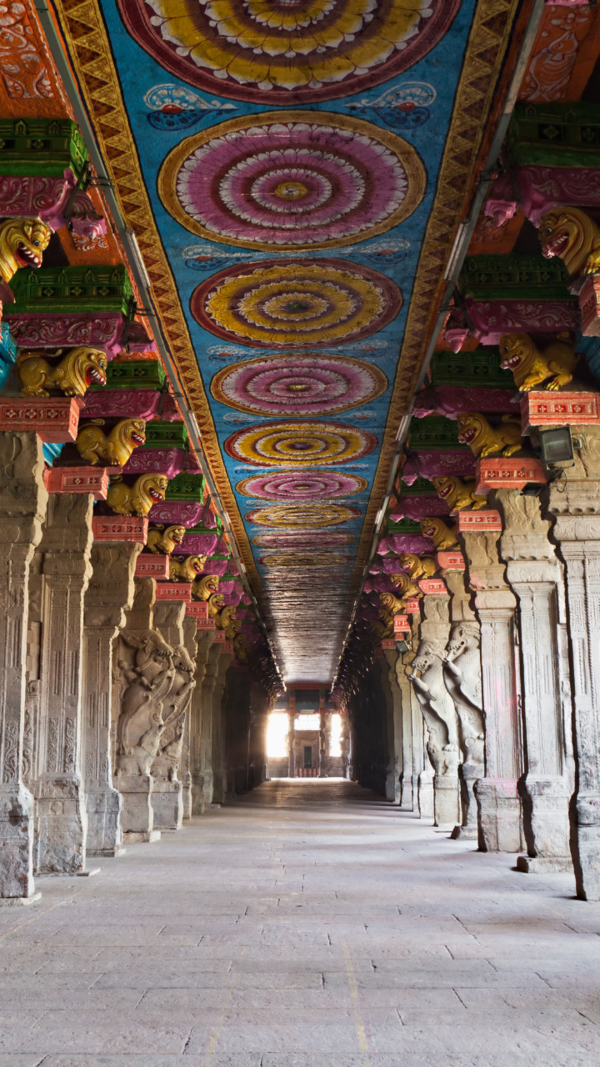- News
- India News
- Times Evoke News
- ‘Tectonics pushed up the Himalayas — they brought monsoons, creating the Indus 50 million years ago’
Trending
‘Tectonics pushed up the Himalayas — they brought monsoons, creating the Indus 50 million years ago’
Geologist Peter Clift explores the Indus River's 50-million-year history, tracing its formation from the collision of India and Asia to its interaction with human societies. The river's evolution, influenced by tectonic activity, monsoons, and even the Thar Desert, shaped the landscape and ecology of South Asia.
Part of Peter Clift’s research is based 66 million years ago — but the geologist conveys an excitement which makes you feel his subject emerged just yesterday. In fact, it didn’t, as Clift explains, ‘I’m interested in the Indus river, when it was born and how it developed. Recently, I’ve studied the evolution of the river over the last 10,000 years,’ — a blink in the eye of geophysical time — ‘To see how it may have interacted with human societies. More broadly, I’m interested in the Indus as a way to look at evolving environment and climate in South Asia.’

Fifty Shades of Blue
How old is the river after whom our very civilisation is named, TE asks? Clift outlines, ‘The Indus seems to have been formed when the Indian continent collided with mainland Asia — it’s probably at least 50 million years old. The big eastern tributaries in Punjab joined the mainstream coming out of Tibet and flowing through Ladakh around then. But there’s some discussion about how much material also came from the East — in particular, there’s a question about the Yamuna.’ Clift pauses here, like he’s unveiling a detective story. He says, ‘Now, 50,000 years ago, the Yamuna, which flows east into the Ganges today, was flowing west into the Indus. We think that stopped about 20,000 years ago. But it used to join the Sutlej and Beas once.’ The Yamuna wasn’t the only enigmatic river. Clift says, ‘Rivers are constantly evolving and meandering, maybe not a lot but with implications for the people they interact with.
Rivers also interact with geophysical entities — the Thar desert moved a little bit east and west through time. That pushed some rivers to the west — when the Thar moved, so did the Sutlej.’

The Elements Cloud: Indus, hill and cloud
There are further forces at play. TE asks Clift about how South Asia’s tectonic landscape shaped the Indus — and vice versa. He replies, ‘It’s a chicken and egg story. Essentially, when India and mainland Asia collided, the first large mountains formed — they attracted rainfall. Those early rains allowed the Indus to form. That was also a trigger for making the Jhelum, Ravi, Sutlej and Beas. As the monsoon grew stronger, those got bigger. There’s a feedback effect then — these rivers cut into the mountains. When they scooped out rock and sediment, high peaks rose and became even taller. So, there’s a virtuous circle between rainfall and tectonic activity — tectonic activity makes the Himalayas, Karakoram and the Tibetan plateau. Those strengthen the monsoon — as the Himalayas go up, the monsoon grows stronger and the rivers get bigger.’

Times Evoke
Fascinatingly, these rivers are intricately linked to erosion. Clift elaborates, ‘The greater Himalayas are made of deep buried rocks, brought to the surface by shallower rocks being eroded away. This is why there are high mountains on the south side of the Tibetan plateau but not on the north side. There are no mountains like these in the Tarim Basin in western China — that’s because it doesn’t rain there and the monsoons cause the erosion. There’s even a feedback here,’ he points out, ‘As you smash up Himalayan rocks into small sand grains, they break down into clay material which is washed into the Indian Ocean. As the Himalayas are so big, there’s a lot of sediment. This process of breaking down these minerals removes carbon dioxide from the atmosphere. So, erosion by the big Himalayan river systems, including the Indus, is possibly one reason Earth grew cooler.’
Did this combination, red earth to falling rain, as it were, also shape the ecologies of the Indus? ‘Oh, yes,’ replies Clift, ‘That certainly influenced animal life, especially fish and the famous dolphins that live in the Indus and Ganges. Ecology in South Asia is more strongly linked to rain than rivers. About eight million years ago, the monsoon got weaker — with a strong shift in ecology. It changed from forests to a lot more grassland and drier conditions in northwest India and Pakistan.’

Indus Dolphin: Echolocating in the swirl
As the Indus shifted shape, how did its civilisation manage? Clift answers, ‘The Harappans had phases of activity, and then, just around 4,000 years ago, the population mostly moved away from the cities they had built along the Indus. There’s been some argument about whether that was caused by the monsoon becoming weaker. I myself have been interested in whether some of this might have been caused by movements of the rivers. One of the tributaries of the Indus is the Ghaggar-Hakra, which now pieces out in the Thar desert. There were Indus Valley sites close to this channel. We wondered if maybe these people sustained themselves in a desert, given a nice water supply from a small river? If you live by a big river and it keeps flooding, that makes your life hard, but a smaller river is simpler to control and easier to grow crops next to. That could have been something the Indus Valley civilisation used. Of course,’ Clift adds, just as you settle comfortably into the thought of a happy little Harappan farming community, ‘As the climate got drier, the Ghaggar no longer held enough and communities were left with no water.’

Town & Gown
Were there crops which survived such ebbs and flows? Clift replies, ‘There were certainly more drought-tolerant crops like millets. Farmers across Asia always adapted. Rice is very water-intensive, wheat, a little less, hence millets were likely a more sustainable choice. There are lessons here as with global warming, the monsoon could grow stormier and crops will need to be rethought.’

Readers write
Finally, TE asks what sources Clift uses to study the Indus, born millions of years ago? ‘I’ve worked with marine sediment cores from the Indian Ocean and Arabian Sea. We collected a long record offshore Mumbai with a consortium of countries. I also have shorter cores, like one kilometre deep under the ocean floor. I’m working on sediment from the continental margin offshore the Indus river mouth now. We also work onshore, drilling into the floodplain to collect sediment pores, etc.’ Clift chuckles, ‘Sometimes you can use things which other people have dug — we’ve had good luck with quarries where people made bricks. There, the mining company had dug a pit and we didn’t have to drill. We could just go right in.’ Perhaps ‘dive in’ would be quite accurate as well.
End of Article
Follow Us On Social Media









